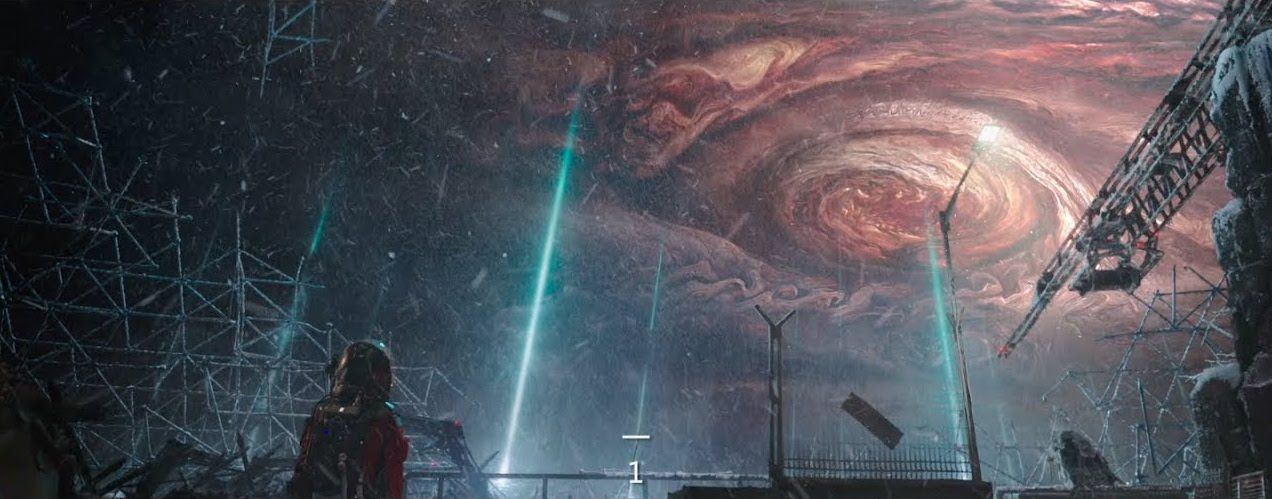With the advent of high-production comic book films and continued interest in hard-hitting action blockbusters, the classic disaster movie is as unpopular as ever. In fact, we may be close to their end…at least on our shores.
A disaster movie is an action/drama film subgenre in which the focus of the plot is on widespread destruction and the attempts by the characters to not die from it. These types of films can trace their roots back to 1950’s sci-fi B-movies, but hit their stride in the 1970’s when they became extremely popular and profitable. Since then the classic Hollywood disaster film has seen its share of revivals and declines, but several developments over the last few years have shown that its end as a viable film genre may be nigh.
Since 1996’s Independence Day, filmmaker Roland Emerich has directed 7 films which I would consider to be disaster movies. He is the de-facto figurehead of the modern disaster film. As I have previously discussed, Independence Day was a huge deal in the mid-90’s. It rode the wave at the end of the practical special effects era to become a classic blockbuster we still enjoy watching to this day. It didn’t exactly reinvent the wheel, but it did reintroduce a once-powerful type of big-budget film to a new generation.

Fast forward to today, and the disaster movie hasn’t really evolved. Moonfall is Emerich’s latest disaster flick, and it follows in its predecessors’ footsteps without shame. The special effects have fully transitioned into the digital realm, but the general idea is much the same as Emmerich’s 1996 blockbuster. This is a sci-fi B-movie updated for the 21st century, complete with rampant conspiracy theories and big-name stars along for the campy ride. But look at the domestic box office proceeds and you will see audience ambivalence.
The same story can be said about most of Emmerich’s disaster films after Independence Day, as well as several other non-Emmerich big-budget disaster films that have hit theaters in recent years. Geostorm (2017) did marginally well at the box office, but the film’s massive budget was not recovered. 2014’s Pompeii barely made back its budget, but The Finest Hours (2016) did not and neither did Deepwater Horizon (2016). Interestingly, one of the most commercially successful big-budget disaster films of the 2010’s was San Andreas, which grossed more than $400 million.
The mostly disappointing balance sheets for these films could potentially be explained by an increased lack of interest from audiences for original big-budget movies. For Moonfall you could also make the excuse that it was released during a pandemic against some other high-profile competition. But the fact is that audiences simply aren’t as excited to see disaster movies as they were in the mid 90’s, and unfortunately I don’t feel like they will ever be again.
There are three main reasons for this. First of all, in the past disaster movies were an opportunity for a filmmaker to show off a significant amount of special effects. Look back at 1974’s Earthquake, for which the Oscars essentially invented the Best Achievement in Special Effects Award. Or consider how both Armageddon and Independence Day were both cutting-edge staples of mid-90’s special effects utilized to their limit. Before Star Wars, disaster movies were the most special-effects laden films you could find in mainstream cinema. Audiences went to the theaters for eye-candy.
These days, every film has cutting edge special effects that seamlessly blend fiction with reality, no matter the budget. CGI has significantly transformed the industry, and “eye candy” isn’t enough to get butts into theater seats. Furthermore, with the proliferation of streaming platforms, special effects are essentially being de-emphasized. You can go to the theater to get the best experience, or you can simply watch it on your couch at home. Many people are choosing the later option, and it means special effects are not as much of a draw as they once were.
Speaking of streaming platforms, there’s another almost insurmountable issue facing disaster films – the derth of quality content available to everyone all the time. Disaster movies are not known for their engrossing stories or award-winning acting. They’re not often helmed by the hottest filmmakers, and there isn’t much that a new disaster film can bring to the table which hasn’t already been seen before in one way or another. Against the competition of everything else that is on a streaming platform, disaster movies don’t offer much to audiences.

Disaster movies reigned in theaters, and without theaters their entertainment value is less appealing. For original content, people are heading to streaming platforms for their favorite original series, or to watch their favorite actor(s) in their newest Netflix specials. Without that type of draw, new disaster movies aren’t much of a competition.
Hollywood has been firmly committed to CGI for more than two decades now. Most of us have already had our fair share of green-screen laden monstrosities. Even if the effects are now better than ever, we still realize the farce and can’t suspend our disbelief. Other properties which have been established don’t have this problem because audiences are invested in the characters or the stories. Disaster films can’t distract you from the fact that they are fake.
Also important to consider is the fact that we have been living through a real-life disaster for the last 2 years anyway. Perhaps the struggle we have all had to endure has had an impact on our opinion towards films which detail similar struggles on the big screen. A lot of the warnings and problems with our societies outlined in disaster films came to be true, and we don’t necessarily want to be reminded of our own shortcomings when we are looking for entertainment.
And despite all this….Roland Emmerich is still able to raise $150 million to finance his latest and greatest disaster extravaganza. How did he do it? One simple word: China. Chinese investments in Emmerich’s latest films have allowed him the freedom to produce huge budgeted films which would now have significant difficulty finding funding through traditional Hollywood studios. It is the continuation of a trend we saw for a few years before the pandemic: Hollywood deciding to stick with its guns on established properties while allowing international markets to partake in original blockbusters.
Consider The Wandering Earth, a CGI-laden blockbuster disaster film financed entirely in China and produced for Chinese audiences. This film had a modest $50 million budget, but went on to become the fifth-highest grossing Chinese film, and also the fifth-highest grossing international picture. It was a huge financial success and spoke to the opportunities that exist internationally that are no longer available in traditional movie markets for non-franchise films.

In fact, look at the other titles of the highest-grossing films in China and you will see a lot of similarities. A majority of the most successful Chinese films are heavily dependent on CGI. Many include plots revolving around war or violence. In other words, there is lots of destruction. The development of big-budget films specifically for the Chinese market is an exciting development for audiences in China. Not only does it signal a more pronounced investment by local studios to cater towards local tastes, but it offers a sense of pride for the audience.
CGI-heavy Chinese films are hitting the big stage right as the technology to create those effects is the most cost effective it has ever been. International productions don’t necessarily have to front the bill for developing this technology the way Hollywood did. Its already available and come without many of the labor complications and expenses present in Hollywood. This allows Chinese films to be much much more profitable than their Hollywood counterparts.
Tie this in with the openness at which international audiences are willing to pay money to see an original film. The studios don’t have to pay expensive fees for rights in order to even start thinking about making a profitable film. Furthermore, the fact that the films are more catered to them than ever before gives international audiences extra incentives to support their locally produced films.
This makes Moonfall an interesting hybrid between the new class of internationally-produced films and traditional Hollywood blockbusters. For a time it seemed like this could be the formula for Hollywood to follow if it didn’t want to make another franchise film. But the decreasing audience interest in original big-budget films and profitability of internationally-produced films means that the return on investment seems to be on the decline. I expect Hollywood to cease working on these types of films, and instead double down on what works locally – i.e. films based on existing popular properties.
This leaves the future of the classic blockbuster film, specifically the disaster movie, in limbo. At least in traditional movie markets. But internationally? There’s plenty of potential for those markets to pick up the slack…

